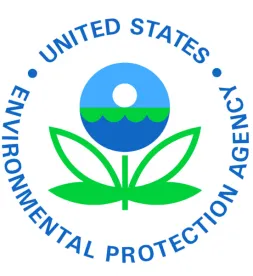On April 11, 2016, the U.S. Environmental Protection Agency (EPA) issued a memorandum entitled "Coverage for ZirconizationTM Under 40 CFR Part 433 (Metal Finishing ELG)," which concludes that "wastewater generated by ZirconizationTM or a process that applies a zirconium oxide finish to a metal substrate is subject to the Metal Finishing [Effluent Limitation Guidelines (ELG)]." Zirconization is the trade name for a process that produces a zirconium oxide conversion on a metal substrate. EPA is basing its conclusion on the characterization of Zirconization as a conversion coating and passivation operation.
ELGs are national regulatory standards for wastewater discharged to surface waters and municipal sewage treatment plants, also known as publicly owned treatment works (POTW). EPA issues these regulations for industrial categories based on the performance of treatment and control technologies. In the U.S., around 40,000 facilities discharge wastewater from metal finishing processes directly to surface waters or indirectly via POTWs. EPA first promulgated the Metal Finishing ELG in 1983, and it was last amended in 1986. This ELG applies to wastewater discharges from industrial facilities engaged in at least one of the following core operations: (1) electroplating; (2) electroless plating; (3) anodizing; (4) coating; (5) chemical etching and milling; and (6) printed circuit board manufacture. EPA's final Development Document for Effluent Limitations Guidelines and Standards for the Metal Finishing Point Source Category (June 1983) defines coating as an operation that "includes chomating, phosphating, metal coloring and passivating."
EPA's recent memorandum provides very few details on its rationale for categorizing Zirconization as metal finishing. EPA cites to statements from DuBois Chemicals that use the terms "passivating" and "conversion coating" in its description of Zirconization as support for its conclusion that the process should be covered under the Metal Finishing ELG. The memorandum serves as guidance for EPA pretreatment program staff, POTWs, and for the 36 states that have EPA-approved pretreatment programs to regulate facilities within those states.
EPA is currently conducting a preliminary review of the Metal Finishing category, which "solicits data and information regarding the discharge and treatment of metals, particularly chromium, nickel, and zinc, in addition to cadmium, copper, lead, silver and any others, to POTWs by metal finishers, as well as any other information believed to be relevant to EPA's review." It is unclear at this time whether this review will lead EPA to revise formally the Metal Finishing category via the federal rulemaking process.
Commentary
The Zirconization memorandum is another example of EPA's efforts to fit newer industrial processes, technologies, and innovations within an aging regulatory framework. The Metal Finishing category is not unique in its age, i.e., most of the effluent limitation guidelines that inform pretreatment standards were last updated over 30 years ago. For several years, the majority of states have been applying the Metal Finishing ELG to Zirconization as a "best fit" option, but arguably an imperfect one. EPA shared a more-detailed draft version of the memorandum with states in 2015. At that time, states did not express concerns with the memorandum, and most states indicated EPA's approach would not change how their programs already informally categorized this industrial process. On April 18, 2016, Bloomberg BNA reported that the National Association of Clean Water Agencies (NACWA), which represents POTWs/wastewater utilities, intends to discuss the memorandum with its membership. A NACWA representative stated, however, that "utilities weren't concerned about the discharges as they saw the process as more environmental[ly] friendly than other conventional metal finishing processes." NACWA did express uncertainty about whether the application of the dated Metal Finishing ELG was appropriate for a new process like Zirconization -- a process that was not considered when the regulation was promulgated.
EPA's review of the Metal Finishing category may eventually result in proposed revisions to the category, but that next step is likely years away. A formal rulemaking process would provide an opportunity for more meaningful input on how Zirconization and other processes may require more specialized effluent limitation guidelines, or warrant the creation of a new industrial category.


 />i
/>i

